Mastering Wavy Curls: Your Guide to Perfect Waves
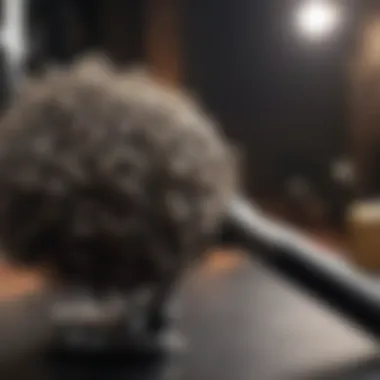
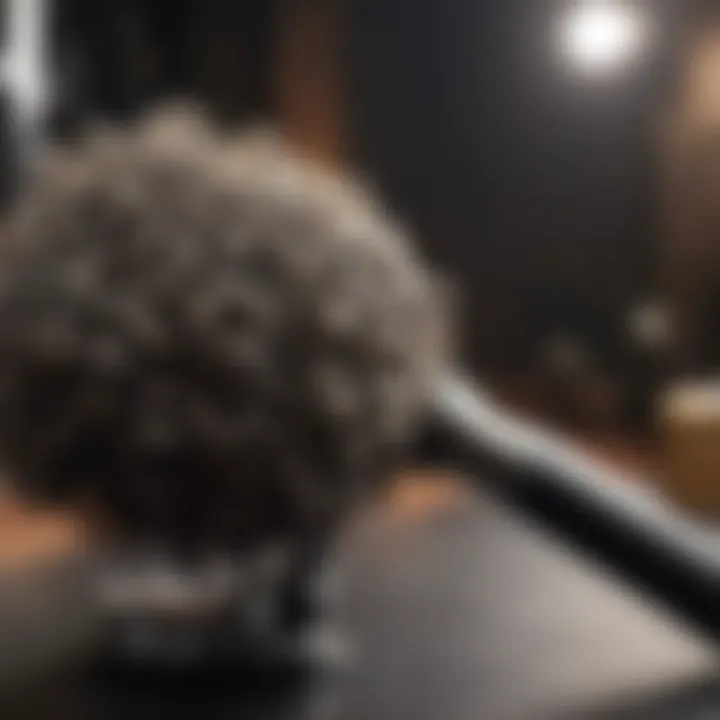
Intro
Wavy curls have become an integral part of modern hairstyling. They bring a touch of elegance and playfulness to any look. This comprehensive guide aims to delve into the various techniques to create these curls, suitable for different hair types and occasions. Whether it is for a casual day out or a glamorous evening event, mastering the art of wavy curls can elevate one’s style significantly.
Understanding how to create these waves involves knowing the right tools, products, and techniques to use. This article will not only provide step-by-step procedures but will also touch on maintenance tips. With all the information presented, readers will gain a full perspective on incorporating wavy curls into their everyday aesthetic.
Fashion Trends
Runway Highlights
Wavy curls have made prominent appearances on various fashion runways across the globe. Designers often choose this style for their models to showcase a laid-back, yet chic look. This trend reflects a balance between formal elegance and casual comfort, appealing to designers and fashion enthusiasts alike.
Seasonal Must-Haves
As seasons change, so too do the styles of wavy curls. In summer days, loose beach waves reign supreme, providing a sun-kissed, effortless vibe. During the fall and winter months, more structured curls come into play, giving a sophisticated touch. Selecting the right styles for the time of year can impact the overall ensemble.
Celebrity-inspired Looks
Celebrity styles often set the trend for many. Recent red carpet events have showcased various interpretations of wavy curls. Stars like Blake Lively and Zendaya have sported this hairstyle, solidifying its place as a go-to look. Their take on wavy curls often inspires fans to experiment with their own hair.
Beauty Tips and Tricks
Skincare Regimens
To achieve stunning wavy curls, maintaining good skin is crucial. Healthy skin ensures that one's overall appearance enhances the hairstyle. Cleansing, moisturizing, and protecting one's skin from harsh environmental factors can enhance confidence when flaunting wavy curls.
Makeup Tutorials
Pairing makeup with wavy curls should be done with consideration. Using soft tones can play well with the texture of the hair. Makeups that enhance features without overwhelming the look produce a harmonious connection between skin and hairstyle.
Hair Care Secrets
Maintaining healthy hair is paramount. Regular use of deep conditioning treatments and avoiding excessive heat protects hair integrity. Utilizing products specifically designed for waviness can help maintain curl definition without compromising hair health.
Celebrity Buzz
Red Carpet Events
Red carpet events serve as notable platforms for celebrities to showcase their style choices. Many opt for wavy curls, accentuating their gowns and overall appearance. The waves often draw attention to jawlines and collarbones, enhancing their attire.
Fashion Police Reviews
Critics frequently analyze celebrity looks on popular television programs. Wavy curls often receive praise for their versatility. When done correctly, this hairstyle can suit varied face shapes and compliment many styles.
Celebrity Style Spotlights
Following celebrities on social media can provide insights into their styling. Learning their secrets can empower fans to replicate those looks themselves. Being aware of trending products endorsed by these stars can help in achieving desired wavy curls too.
Trend Reports
Street Style Snapshots
Street style showcases the authentic, everyday wear of individuals. Wavy curls often appear in these snapshots, giving a glimpse into how people incorporate this style into their lives. This casual approach promotes the adaptability of wavy curls across different settings, from chic urban outfits to relaxed weekend wear.
Beauty Product Reviews
Understanding which products perform best for wavy curls is crucial. Brands like Ouai and Moroccanoil offer various products that help define curls without weighing hair down. Reviewing these items can provide information on their effectiveness and suitability for different hair types.
Fashion Forecast Analysis
As styling trends evolve, it is important to stay updated. Fashion analysts frequently share their insights on upcoming trends, including wavy curls. Anticipating styles can help individuals prepare to adapt their hair regimen according to the latest fashions.
Foreword to Wavy Curls
Wavy curls have remained a timeless hairstyle for many individuals seeking to enhance their personal aesthetic. The significance of this hairstyle goes beyond mere fashion; it offers versatility, adaptability, and a way to express one’s individuality. Understanding how to create and maintain wavy curls is crucial for anyone looking to elevate their hair game. This introduction will cover the key aspects of wavy curls, their appeal, and the advantages of incorporating them into one's look.
Wavy curls can complement various face shapes, hair types, and colors. They possess a natural quality that can soften facial features or add volume to thin hair. Many enjoy wavy curls for their ability to transition seamlessly from day to night, allowing for both casual and formal settings. Moreover, the styling options can be tailored to achieve different levels of curl intensity, ranging from loose, beachy waves to tighter spirals, depending on the occasion.
Benefits of Wavy Curls
- Versatility: Works well with short or long hair.
- Low Maintenance: Can look good with minimal styling efforts.
- Changeable Looks: Easy to alter the curl tightness or add accessories.
However, creating wavy curls requires some knowledge of techniques, tools, and hair products. Understanding your hair type and its texture can significantly influence your styling choice. Thus, a deep dive into how to make wavy curls is not merely beneficial but essential for achieving desired results.
Defining Wavy Curls
Wavy curls are defined by their distinctive shape and texture. They usually feature a soft, undulating pattern that can range from slight bends to more pronounced waves. Unlike tight curls, wavy curls maintain a balance, offering a relaxed yet styled appearance. Hair texture plays a significant role in the definition of wavy curls; finer hair may show waves differently compared to coarser hair.
Characteristics of Wavy Curls
- Texture: Usually smooth, with a natural shine when well-maintained.
- Shape: Curved but not as tight as traditional curls.
- Volume: Offers a natural and full look without added products.
Understanding this definition is crucial for individuals as they approach styling. It sets them up for success when selecting tools and products that best suit their hair.
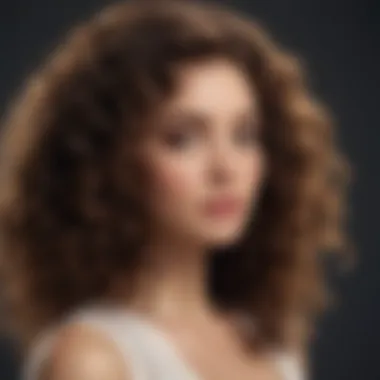

Historical Perspective
The history of wavy curls is deeply intertwined with changes in fashion and societal norms. Originally, waves were seen in ancient civilizations, where women would use simple tools like heated iron implements to create curls. Fast forward to the 18th century, and waves became a hallmark of aristocratic elegance, often symbolizing glamour and status.
As fashion evolved, so did the styling techniques. The 1920s embraced the bob, showcasing smoother, waved textures that aligned with the era’s flapper culture. Post World War II, waves became a symbol of femininity in Hollywood, embraced by actresses like Marilyn Monroe and Rita Hayworth. These historical patterns underline the enduring appeal of waves as they adapt to modern trends while maintaining their classic roots.
Wavy curls have transcended generations and styles, proving to be a hair staple that resonates with many. Their historical journey adds depth to their modern significance, highlighting waves not just as a hairstyle but a representation of cultural shifts in beauty and style.
"Wavy curls are not just a trend; they are a timeless expression of beauty shaped by history."
Understanding this historical context enhances appreciation for wavy curls as more than a cosmetic choice; they are a reflection of personal and cultural identity that continues to evolve.
Understanding Hair Texture
Understanding hair texture is crucial when trying to create wavy curls. Each hair type has its unique characteristics that influence how curls form and last. Recognizing these differences allows for the application of the most suitable techniques and products, tailoring the approach to meet the individual needs of the hair. This knowledge not only enhances the quality of the curls but also ensures they remain healthy and vibrant.
Types of Hair Textures
Straight
Straight hair is often characterized by its smooth surface and lack of natural curl. This texture allows for various styling options, including the effortless creation of wavy curls with the right tools. The primary benefit of straight hair is its manageability. Since it tends to hold styles well, it can be an excellent base for creating wavy looks without excessive styling efforts. However, one disadvantage is that straight hair may require more heat and product to achieve desired waves, potentially leading to heat damage if precautions are not taken.
Wavy
Wavy hair is versatile and falls naturally into soft, effortless waves, making it a popular choice for styling. This type of hair can bring a relaxed yet polished look to the overall style. Its inherent texture allows for easy manipulation into more defined curls or softer beach waves, depending on preference. The unique feature of wavy hair is its adaptability to different styling methods, though defining the waves can sometimes prove challenging. This may result in waves that conveniently fall out during the day without proper products or techniques to hold them in place.
Curly
Curly hair is known for its defined ringlets and volume, offering dramatic style possibilities. The key characteristic of curly hair is its bounce and fullness, which contribute to a lively appearance. This texture provides a unique opportunity to create effortlessly chic wavy curls, as the inherent shape of the curls can support a variety of styles. The downside is that curly hair often necessitates targeted products to maintain moisture and prevent frizz, which can complicate styling efforts if the appropriate care routine is not established.
Coily
Coily hair is distinguished by its tight curls and significant texture. This type typically offers the most pronounced volume among various hair textures, creating a distinct look. Coily hair is often resilient and can hold curls exceptionally well, contributing to a rich, textured appearance. However, it can be more susceptible to dryness and requires intensive moisturization to maintain its health and elasticity. When creating wavy curls, coily hair may need specialized techniques to soften the curls without losing definition.
How Texture Influences Curling Techniques
The approach to curling hair can vary considerably based on texture. For instance, straight hair may benefit from the use of heat styling devices, while wavy hair might employ more non-heat methods like rollers for a natural look. Curly and coily hair types often necessitate a focus on hydration and defining products to complement their natural curl patterns. Understanding these distinctions helps in developing effective curling techniques that ensure beautiful, long-lasting results.
Essential Tools for Wavy Curls
Creating wavy curls requires the right tools for effective and lasting results. Each tool serves a unique purpose that can make all the difference in achieving the perfect waves. Understanding these tools gives you a foundation for styling that aligns with your preferences and hair type. Here, we explore the essential tools that aid in the curling process, emphasizing their benefits and key characteristics.
Curling Irons
Curling irons are iconic for creating waves in hair. They come in various sizes and types, catering to different styles and hair lengths. Choosing the right curling iron directly influences the type of wave produced.
Sizes and Barrel Types
The size of the barrel is critical when selecting a curling iron. There are typically two options available: narrow and wide barrels.
- Narrow barrels (around 1 inch) are ideal for tighter, structured curls. These curls often lend a more formal look and may hold their shape well due to the smaller size.
- Wide barrels (over 1.5 inches) create looser, beachy waves, offering a relaxed aesthetic.
Having a variety of barrel sizes allows flexibility in styling. A popular choice is the tapered barrel, which narrows at one end. This design creates a more natural wave. However, the key feature to remember is control; smaller barrels may require more attention and skill compared to wider barrels, which can be more forgiving.
Temperature Settings
Temperature settings play a pivotal role in curling hair effectively and safely. A good curling iron features adjustable temperature controls that cater to different hair types.
- Higher temperatures are suited for people with coarse or thick hair, allowing the heat to penetrate and reshape the hair shaft effectively.
- Lower temperatures are recommended for fine or damaged hair, protecting it from excessive heat and potential breakage.
The unique feature of adjustable heat is its adaptability. It ensures that each user can customize their experience depending on their hair's needs, leading to healthier styling outcomes. However, one downside to higher heat settings is the risk of heat damage if not monitored closely.
Hair Rollers
Hair rollers provide a different approach to achieving wavy curls. They can deliver volume and bounce without direct heat, making them a safer option for your hair.
Materials
Hair rollers come in different materials, such as foam, velcro, and heated varieties.
- Foam rollers are soft and comfortable, making them easy to sleep in, which is convenient for overnight styling.
- Velcro rollers grip the hair firmly, allowing for good hold while creating volume.
- Heated rollers, on the other hand, deliver instant heat, offering quick curl formation. This feature can be beneficial for those short on time.
Each material has its advantages. However, foam rollers may take longer to achieve curls compared to heated versions. Understanding the material helps in selecting a roller type that aligns with your needs.
Usage Techniques
Using hair rollers requires specific techniques for success.
- Sectioning hair appropriately is key. Divide your hair into manageable sections, especially for larger volumes of hair.
- Applying rollers can vary, but starting at the ends and rolling towards the scalp is common. This technique helps to stabilize the wave at the root, promoting a bouncy effect.
The usage of rollers can yield significant benefits. They are a heat-free method, reducing damage and preserving natural hair health. However, the downside is that roller sets typically require more time than direct heat methods, which some might find inconvenient.
Other Useful Tools
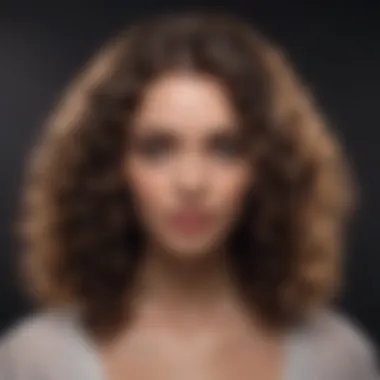
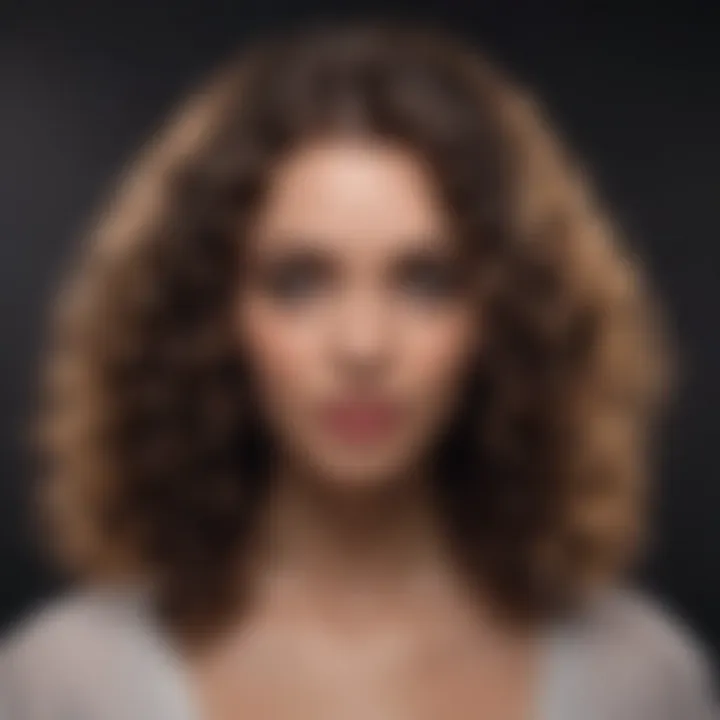
Beyond curling irons and hair rollers, several other tools enhance the process of styling wavy curls.
Clips
Clips are essential for sectioning hair during styling. They keep sections secure, allowing you to focus on one area at a time. This organization aids in even curl distribution, ensuring no section is overlooked. Clips are generally lightweight and easy to use, which makes them a beneficial choice for any styling session. Their key feature is versatility, as they can adapt to different hair types and styling methods.
Heat Protectant Spray
Heat protectant spray is essential when using heated tools. It creates a barrier against high temperatures, minimizing heat damage.
- Features often include moisturizing components that help to keep hair healthy while styling.
- Choosing heat protectant sprays with natural ingredients can provide additional benefits.
Incorporating heat protectant spray into your routine can significantly enhance hair health over time. The advantage is clear: healthy hair can withstand styling challenges better than unprotected strands. However, it's crucial to apply the product evenly to achieve its maximum benefits.
Hair Products for Styling Wavy Curls
When it comes to achieving stunning wavy curls, choosing the right hair products is crucial. Hair products for styling wavy curls not only help define and enhance the waves but also maintain their health. The right products can reduce frizz, add moisture, and ensure that your curls last throughout the day. It is essential to understand each type of product and how they contribute to the overall look. By selecting suitable products, one can achieve the desired waves more efficiently and effectively.
Pre-Styling Treatments
Conditioners and Serums
Conditioners and serums prepare your hair for styling. They contribute greatly to the overall health and manageability of your curls. A key characteristic of conditioners is their ability to hydrate and soften the hair. This becomes especially vital for textured hair that tends to be drier. The unique feature of serums is their lightweight nature, which helps in taming frizz while providing shine. Hence, they are a beneficial choice when creating wavy curls, as they make it easier to work with the hair.
However, it is essential not to overuse these products. Excessive application can lead to greasy hair, which is counterproductive to achieving that natural wave.
Heat Protectants
Heat protectants are another crucial element to consider when styling wavy curls. These products create a barrier between your hair and heat sources like curling irons or flat irons. A significant characteristic of heat protectants is their ability to reduce moisture loss. This feature is particularly important for maintaining healthy hair when exposed to high temperatures. They have become a popular choice because they protect the hair structure, minimizing damage and breakage.
Nonetheless, they must be applied correctly for maximum effectiveness. Applying too much can make hair feel heavy, while insufficient amounts may not offer adequate protection.
Styling Products
Mousses
Mousses provide volume and hold without weighing down the hair. Their lightweight texture is ideal for creating wavy curls that have bounce. A key characteristic of mousses is their foamy consistency, which easily spreads throughout the hair. This quality makes them a beneficial choice for achieving soft, natural-looking waves. The unique feature lies in their versatility; they work well on various hair types, from fine to thick.
Despite their advantages, using too much mousse may lead to stiff curls, which is something to be cautious of.
Gels
Gels are excellent for achieving defined, long-lasting waves. They offer a stronger hold than mousses, making them perfect for more structured curls. A noteworthy characteristic of gels is their ability to lock in moisture while providing definition. They are often favored for their capability to withstand humidity, which is crucial for maintaining curls in various conditions. The unique feature of gels is that they can also impart shine, enhancing the overall appearance of the waves.
On the downside, excessive gel can cause crunchiness, so it is important to find the right amount to apply.
Sprays
Sprays play a vital role in achieving that final touch for wavy curls. They come in various forms, including texturizing sprays and finishing sprays. The main characteristic of sprays is their convenience and their ability to set the style in place. This characteristic makes them a popular choice, as they are easy to use and provide immediate results.
A unique feature of texturizing sprays is their ability to add texture and movement to the waves. However, overusing sprays can lead to product buildup, affecting the hair's natural feel.
Post-Styling Care
Shine Serums
Shine serums are essential for adding luster to wavy curls. They help enhance the overall appearance of the curls by adding a glossy finish. The key characteristic of shine serums is their lightweight formulation, which allows application without weighing the hair down. They are a beneficial choice for those looking to add that polished touch to their waves.
However, using too much serum can make the hair appear oily, so it is critical to apply just enough for a subtle shine.
Hair Sprays
Hair sprays provide crucial hold for your styled curls. They ensure that the waves maintain their shape throughout the day while preventing unwanted frizz. A key characteristic of hair sprays is their quick-drying formula, which allows for immediate wear. They are a popular choice because they can cater to different types of hold—flexible or strong—based on preference.
However, excessive use of hairspray can lead to stiffness, so moderation is key to achieving a natural look.
Techniques for Creating Wavy Curls
Creating wavy curls requires understanding various techniques that can fit different hair types and desired looks. This section will provide insights into using common tools like curling irons, hair rollers, and flat irons. The right technique can result in beautiful waves that last. Mastering these methods enhances flexibility in styling and contributes to a polished appearance. Furthermore, each approach has unique characteristics that cater to individual preferences, making this overview essential for achieving the perfect wavy curls.
Using a Curling Iron
Sectioning the Hair
Sectioning the hair is crucial when using a curling iron. This method involves dividing the hair into manageable parts to ensure each section can be curled effectively. By carefully sectioning hair, you guarantee that the curling iron reaches all parts uniformly, preventing missed strands or uneven waves. This technique is popular because it allows for precision and control during styling. The main characteristic of sectioning is that it helps in creating consistent waves. However, one consideration is that it takes extra time to part the hair into sections. It requires some practice to become efficient in this step, but it leads to remarkably refined curls.
Technique for Waves
The technique for waves using a curling iron is essential to shaping the curls. It involves wrapping hair around the barrel in a specific direction and releasing it after a few seconds. This method creates defined waves that can be tight or loose, depending on how long you hold the hair on the iron. It's a popular choice due to its versatility. You can adjust the size of waves by using different barrel sizes. One advantage is that it offers swift results for casual or formal looks. A drawback, however, is the potential for heat damage if used incorrectly or excessively. Therefore, proper technique and heat protection are necessary to ensure hair health while styling.
Using Hair Rollers
Setting the Rollers
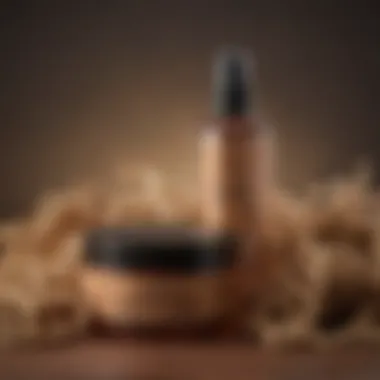
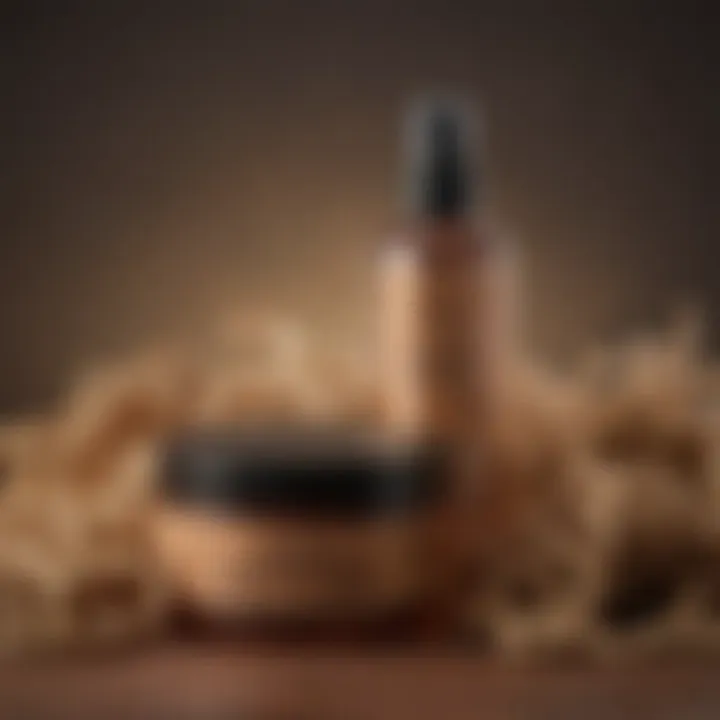
Setting the rollers is a traditional method for creating wavy curls. This technique requires rolling sections of hair onto the roller and securing it until it cools. The beauty of setting rollers lies in the ability to create volume and soft waves without thermal heat. It's popular for its gentleness on hair, making it an excellent option for those seeking to avoid heat damage. The unique feature of this method is the extended time rollers are left in, allowing curls to set completely. One advantage is that you can do other tasks while waiting. However, the downside could be that it takes longer to achieve the style compared to heat styling methods.
Removing the Rollers
Removing the rollers should be done carefully to maintain the curls. After allowing sufficient time for the curls to set, slowly unroll each section. This step is significant because it preserves the curl's integrity and prevents frizz. The key characteristic here is patience, as hastily removing them can lead to tangles. This technique is beneficial when aiming for voluminous, defined curls. The unique aspect is that the result can vary with the amount of hair rolled and how tightly it's set. However, there might be an issue with timing if you're in a hurry, as it does require a bit of a wait.
Using a Flat Iron
Twisting Method
The twisting method with a flat iron can yield surprisingly beautiful waves. This technique involves clamping a section of hair and twisting the iron in a circular motion as you glide down the strand. The primary advantage of this method is its ability to create more casual, beachy waves quickly. It is popular among users who want a different approach to curling. The unique feature of the twisting method is that it allows for varied wave sizes based on the speed of the pull and the angle of the twist. An important consideration is that it challenges the traditional notion of flat irons, as they are seen primarily for straightening.
Creating Loose Waves
Creating loose waves with a flat iron involves similar techniques as the twisting method, but with less tension or speed. This approach gives a more relaxed wave that has a natural appearance. Its popularity stems from its simplicity and the minimal time needed to achieve soft curls. The main characteristic is that it can effortlessly create a beachy, tousled look that is highly favored. An advantage is that this technique may also aid in reducing frizz, while the heat effect can last longer compared to traditional techniques. However, it may not deliver tightly defined curls as some might prefer.
Maintaining Wavy Curls
Maintaining wavy curls is essential for achieving the desired look while ensuring the health and vitality of your hair. Proper maintenance can extend the life of your curls and help to keep your hair looking vibrant and well-styled. Neglecting care can lead to frizz, dryness, and a lackluster appearance. Therefore, a consistent routine is vital to manage and maintain the integrity of wavy curls.
Daily Care Routine
A daily care routine plays a critical role in preserving the condition of wavy curls. This routine can include a few simple but effective steps to enhance the texture and shine of the curls.
- Moisturize Regularly: Use a moisturizing shampoo and conditioner to keep hair hydrated.
- Styling Creams: Applying a light curling cream after washing can help define the waves without weighing them down. Look for products with ingredients like coconut oil or shea butter.
- Gentle Detangling: Avoid vigorous brushing. Instead, use a wide-toothed comb, especially when the hair is wet, to prevent breakage.
- Sleeping Protections: Use a silk or satin pillowcase or wrap your hair in a silk scarf. This minimizes friction, which can create frizz and disrupt the curls overnight.
- Hydration: Staying hydrated is equally important. Drink plenty of water to maintain scalp health and hair elasticity.
Avoiding Heat Damage
Avoiding heat damage is crucial for maintaining the quality of your wavy curls. Heat styling tools can give you beautiful curls but can also weaken the hair structure over time if not used properly. Here are several strategies to minimize heat damage:
- Lower Heat Settings: When using curling irons, always opt for the lower heat settings first. Experiment to find the temperature that achieves desired curls without burning the hair.
- Heat Protectants: Always apply a heat protectant spray before using any heat styling tools. This product creates a barrier that shields hair from high temperatures.
- Limit Heat Usage: Try to restrict the use of heat styling tools to once or twice a week. Embrace heatless methods whenever possible, such as braiding hair while damp to create waves.
- Avoid Overlapping Hot Tools: This means avoiding applying heat multiple times to the same section of hair. Allow the hair to cool down before styling another section.
- Regular Treatments: Use deep conditioning treatments weekly to restore moisture and strength to your hair. Consider products with protein to help repair any potential damage.
Maintaining wavy curls requires a balance of good daily care and specific strategies to avoid heat damage. Together, these practices ensure that your curls not only look good but also remain healthy.
Experimenting with Wavy Curls
Experimenting with wavy curls allows individuals to explore and express their own personal style. This section delves into the various ways to mix and match curling techniques and accessories, thus expanding the potential for unique hairstyles. The beauty of wavy curls lies in their versatility, accommodating different styles for diverse occasions. It is essential to understand the various approaches and products that can enhance your look while maintaining the integrity of your hair.
Mixing Different Styles
Beach Waves
Beach waves represent a casual yet polished style that captures a relaxed aesthetic. They are characterized by soft, tousled curls that mimic the look of hair after a day at the beach. This style is popular for its effortless appearance and is relatively easy to achieve with the right tools and products.
The unique feature of beach waves is their imperfect, undone look. This adds character to the hairstyle, making it a favorable choice for various settings, from casual outings to more formal events. The advantages include versatility and an easygoing charm that works well in both summer and winter months. However, achieving the perfect beach wave might require practice and the right technique to avoid overly tight curls that stray from the desired look.
Soft Curls
Soft curls offer a more polished appearance compared to beach waves. They typically have more defined ringlets, which add a touch of elegance to any hairstyle. This subtle difference in curl definition makes soft curls a go-to choice for events requiring a more refined look.
The key characteristic of soft curls is their smooth and shiny finish. These curls seem more structured and controlled, contributing a glamorous flair. Their appeal lies in their adaptability; they can be dressed up or down, fitting various styles and occasions. The unique feature is their longevity when styled properly, though they may require more maintenance over time to retain the desired shape.
Incorporating Accessories
Hairbands
Hairbands can elevate the style of wavy curls. They come in various designs and colors, allowing for creativity in styling. Hairbands not only serve a practical purpose in holding hair back but also add a decorative touch.
The distinct advantage of using hairbands is their ability to complement a hairstyle without overpowering it. They are a beneficial accessory for those who want to keep their curls well-defined while adding flair. However, depending on the material, some hairbands might create tension on hair, leading to damage over prolonged use.
Pins
Pins are essential tools that can assist in securing waves and curls. They can be used creatively to style hair into various looks, from intricate updos to more casual adjustments. Using pins helps manage sections of the hairstyle while allowing for flexibility in appearance.
The key advantage of pins is their discreteness; they can be hidden within the hairstyle, ensuring a neat finish. Also, they offer stability and support for more elaborate styles. Nevertheless, overuse of pins can lead to pulling on the hair, which may cause breakage if not handled carefully.
Experimenting with different curling styles and accessories is not just about aesthetics; it's about discovering a personal identity through hair.
As you experiment with combining techniques and accessories, keep in mind the balance between style and hair health. This helps to create a signature look that truly represents you.
End
The conclusion of this guide on wavy curls brings together essential insights and understanding gained throughout the article. It is critical to recognize how each segment interlinks, forming a holistic approach to styling wavy curls. Emphasizing the variety of techniques and tools available enhances a reader's ability to select methods that align with their hair type and personal aesthetic goals.
Summarizing Key Points
This guide has explored multiple dimensions of creating wavy curls. The key points include:
- Understanding Hair Texture: Knowing your hair type is vital. Each texture responds differently to styling. For example, straight hair may require different curling techniques compared to coily hair.
- Essential Tools: Effective curling requires the right tools such as curling irons, hair rollers, and the correct styling products tailored to your unique hair needs.
- Techniques and Maintenance: Detailed techniques have been provided for using various tools. Also, maintaining wavy curls through careful daily routines is paramount to preserve the health of your hair and the longevity of the style.
- Experimentation: Encouraging personal expression through mixing different styles and the use of accessories can elevate the appeal of wavy curls.
By synthesizing these key points, one can achieve not only waves that look great but also waves that enhance one's overall style with ease and flair.
Encouraging Personal Style
Encouragement for personal style is a significant facet of achieving wavy curls. While techniques for creating waves are universal, the application and adaptation of these methods should reflect one’s individuality. Experimentation with wave sizes and styles can yield fascinating results.
For instance, beach waves can create a relaxed and effortless look, while defined curls may bring about a more polished appearance suitable for formal events. Additionally, incorporating unique accessories such as decorative hairbands or pins can transform a standard wavy hairstyle into a memorable hallmark of personal style.
Ultimately, it is essential to embrace creativity during the styling process. Each person has the opportunity to define their own expression through the art of wavy curls. As techniques evolve, so too should one's approach to beauty, allowing for dynamic interpretation that aligns personal style with current trends.















